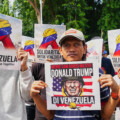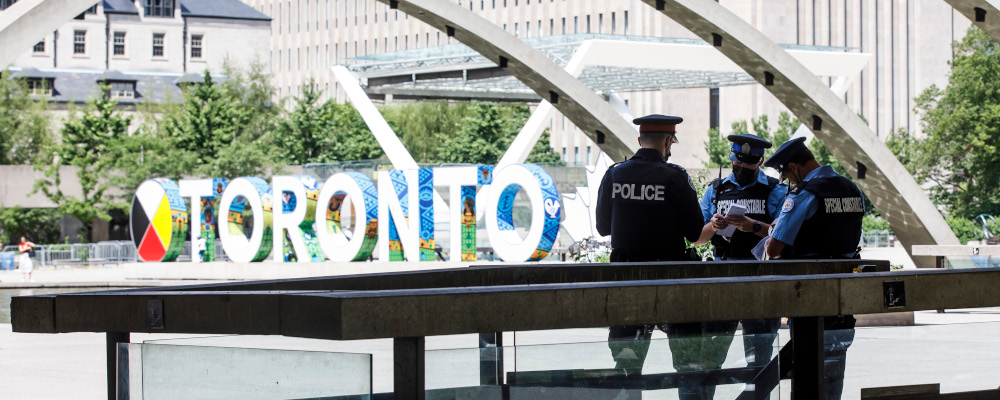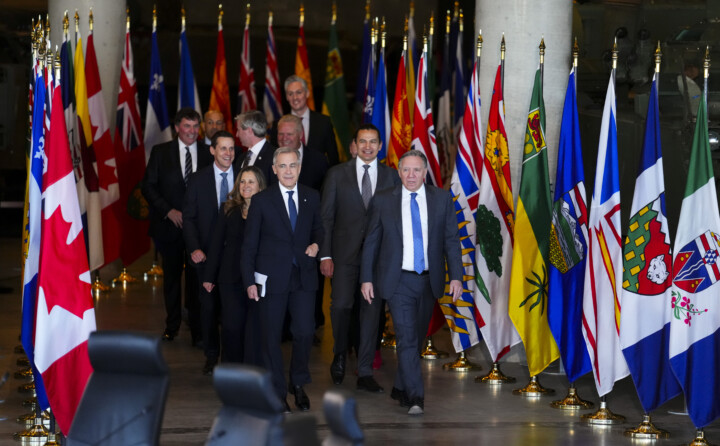For the first time since 2010, Toronto has a Left-leaning mayor. Torontonians on the centre-right of the spectrum should take some time to reflect on how we got here, and how to move forward.
The short answer is, we got here by accident. We were in control for over a decade. Mayor John Tory wasn’t defeated at the ballot box but by his personal life. In the ensuing mayoral by-election, the centre-right vote split four ways, allowing Olivia Chow to squeak into office with 37 percent of the vote. It wasn’t so much a rejection of the long centre-right run at City Hall as it was an unwillingness by centre-Right voters to settle on one candidate. Centrist Ana Bailão came within five points of catching Chow, while the various conservative candidates took about 15 percent of the vote. In other words, the centre-right lost because it was divided. And, frankly, complacent.
In the aftermath of the election, I wrote that it’s time to move on from the old “stop the war on cars” playbook. I argued that we need solutions for 2026, not 2010. So, naturally, you’re wondering what that might look like. I’m glad you asked!
The first step is realizing that’s conservatives can’t go it alone. Toronto’s electorate is roughly divided between the Left, Right, and Centre. The 2014 election was illustrative since it featured our last three mayors, who represent those three coalitions. Centrist John Tory took 40 percent of the vote while populist Doug Ford (who stood in for his ailing brother) took 33 percent and NDP-aligned Olivia Chow received 23 percent. In a three-way race, the centrist candidate has the best chance of winning.
Rather than trying to carve out a strident conservative position to win a three-way split, conservatives should focus on trying to edge out centrist candidates. That starts with having a clear vision for the city and messaging that doesn’t scare off potential centrist voters.
There are three areas where any prospective conservative mayor needs to win: policing, public finances, and housing. These are bread-and-butter issues where the Left is vulnerable. More broadly, Toronto’s centre-right needs to take on the forces of “no.” We need a vision for how to get things done, rather than sitting back and waiting for the Left to fail.
Policing
I specified policing rather than crime for a reason. While it’s easy to blame politicians for crime, changes in crime rates are often beyond their control. After a multi-decade decline in crime rates, Canada’s violent crime began to increase in 2015. Wouldn’t you know it, that’s when Justin Trudeau became prime minister! It’s one heck of a coincidence. But that’s exactly what it is. Crime statistics followed the exact same trajectory in the United States, also bottoming out in 2014. Crime is complicated. Sometimes we get sideswiped by external forces, like the crack epidemic in the 1980s, the rise of fentanyl, and a global pandemic.
Focusing on policing rather than crime would be useful since it’s actually within governments’ control. You don’t have to be conservative to see some of the gaps in Toronto policing. If you’ve ever tried to call the police, there’s a good chance no one showed up unless someone got stabbed.If you have a nuisance complaint it probably gets sloughed off to bylaw, and the city won’t put bylaw officers in danger. So they often just don’t show up (which is my experience). For downtown residents, police are mostly abstract.This isn’t just anecdotal. Toronto has fewer police per person than other Canadian cities. A City of Toronto briefing note pointed out that the city has 163 officers per 100,000 residents, fewer on a per capita basis than Vancouver (189) and Montreal (204), let alone London (376) and New York (414). The report estimates that it would take $109.5 million to get staffing up to Vancouver levels. That may seem like a lot, but the City has an operating budget of around $16 billion. It shouldn’t be impossible to find that money.
Focusing on policing also allows conservatives to steer away from thornier issues municipal politicians have no control over, such as sentencing. Frankly, while conservatives have the high ground if they’re talking about deploying more officers, they’re on shaky ground when they talk about locking more people up—though it is possible we need bail reform.American evidence suggests that more officers and fewer prisons is the right mix. America has more than six times as many prisoners as Canada per capita but has a homicide rate 2.8 times higher than ours. If reducing crime was a simple matter of locking more people up, America would be by far the safest place on earth. It’s not.
Public finances
Public finances are a more complicated issue. Toronto has a billion-dollar budget hole. And unlike provincial and federal governments, municipal governments are pretty lean. It’s hard to just cut our way out of budgetary troubles. The City has restrained spending for more than a decade. But it hasn’t necessarily been from getting more for less. Rather, we’ve deferred a lot of spending, and it shows. A lot of basic services from garbage collection to public washrooms have been neglected. Being cheap isn’t the same as being fiscally responsible.
Conservatives need to find ways to better align revenue with spending. That’s tough at the municipal level since local governments don’t have as many revenue tools as upper levels of government. But there are things that can be done. Broadly, one goal should be to get the TTC’s finances back into pre-pandemic shape.
For years the TTC was able to collect around 70 cents for every dollar of operating costs through the farebox. Believe it or not, the TTC was the most efficient public transit service in North America by that metric. Having the TTC largely self-finance takes pressure off of City finances. But getting back there won’t be easy. The latest TTC budget estimated the farebox recovery ratio would be 39 percent for the year. Taxpayers are on the hook for almost a billion dollars of operating subsidies, and that’s with reduced transit service. We have a long way to go to get back to a financially stable TTC.
Part of the solution will, in the short term, cost more money. We need the TTC to be dependable again if people are going to take it. Part of the solution is increased frequency, which costs money. Another part of it will be making passengers feel safer after a spate of high-profile assaults and murders in TTC vehicles and stations. Making the TTC more reliable and safe will lead to greater ridership. Being cheap right now when we need to rebuild ridership will be costly in the long term, and certainly won’t help with the city’s congestion issues. We can’t let short-term cost-cutting undermine the long-term viability of the TTC.
Another way in which the City can better align revenue and expenditures is to ensure that road users are paying their way. This is controversial, I know, but if drivers aren’t paying the full cost of using the roads, all taxpayers have to make up the difference. There are a number of ways to do this, but a commercial parking levy is one of them.The silver lining is that internalizing the cost of driving would make transit more appealing to some people for at least some trips, increasing TTC ridership. So there could be a double dividend for City finances. It may be a tough pill to swallow, but if both transit users and drivers are paying their way, we can keep property taxes down.

Housing
Finally, there’s housing. Toronto is in a housing crisis. We’ve blown past worrying about whether young people will be able to afford to buy a house to whether they’ll even be able to afford to rent in the city.
There’s a pretty broad political consensus that we need to build a lot more housing to address the problem. The provincial government commissioned a housing affordability task force that recommended building 1.5 million new houses over the next decade—around double our current rate. The provincial government, however, forecasts that we’ll continue running at about half that rate for the next three years. This makes it extremely unlikely we’ll meet our goals. In other words, housing affordability will have to wait for another generation.
Or, we can match our rhetorical commitment to building more housing with policy. To be fair, the Ford government has taken more dramatic steps on housing than any provincial party was willing to take even a few years ago. But it’s not enough. The City shouldn’t sit back and wait for the province to do more.
Fortunately, the City has also taken action. Historically it has been nearly impossible to build anything in most of Toronto other than a detached house. Recently the City decided to allow fourplexes “as of right.” In other words, they don’t need to seek special permission. This is a positive, market-oriented approach to tackling our housing crisis. But, again, this isn’t enough.
We don’t just need more duplexes, triplexes, and fourplexes. We need more apartment buildings in existing neighbourhoods. Not everyone will like that, but the alternative is simply accepting that a generation will be priced out of Toronto’s housing market. That would be a major problem for Canada’s competitiveness and quality of life, but it’s where we’re heading if we don’t make some tough choices.
Bonus: get rid of the gimmicks
Finally, there’s one thing that conservatives need to avoid: costly gimmicks. Conservatism is at its best when focused on practical solutions to concrete problems. It can be a needed corrective to utopian dreams. But being in opposition often leads to unproductive temptations.
Sometimes differentiation for the sake of differentiation gets you in trouble. Look no further than the Scarborough subway.
The Scarborough subway was a popular gimmick. So popular that Premier Wynne felt compelled to withdraw her opposition just in time for a Scarborough by-election. Replacing the elevated RT with a subway (rather than a proposed LRT) was an easy short-term political win. Thirteen years later, it’s a disaster with no end in sight.The Scarborough subway is years away. The RT recently shut down after a derailment, and Scarborough now needs some sort of short-term solution to shuttle people in and out of downtown. So Scarborough is trading down from LRT to bus when they were promised an upgrade to subway. This is the danger of prioritizing slogans over achievable goals.
Retaking the mayorship will require a broadly appealing message supported by achievable solutions to 2026 problems. Slogans won’t get you there. Neither will opposing things like bike lanes, which the last election should remind us are here to stay. Any conservative candidate for mayor needs to build a big tent and show people how they can solve problems that the Left is unable or unwilling to address. Otherwise, come 2026 we’ll be right back where we started.
Recommended for You
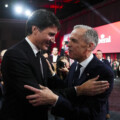
Canadians lost confidence in Parliament at end of Justin Trudeau’s prime ministership: Statistics Canada
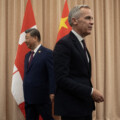
‘All risk and no reward’: The Roundtable on why Carney’s China trip is a really big deal
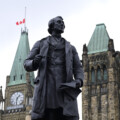
Mark Carney’s spelling and the ghost of Sir John A. Macdonald
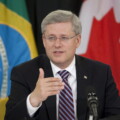
Harper was right—Canadian foreign policy should prioritize the Americas: The Weekly Wrap
